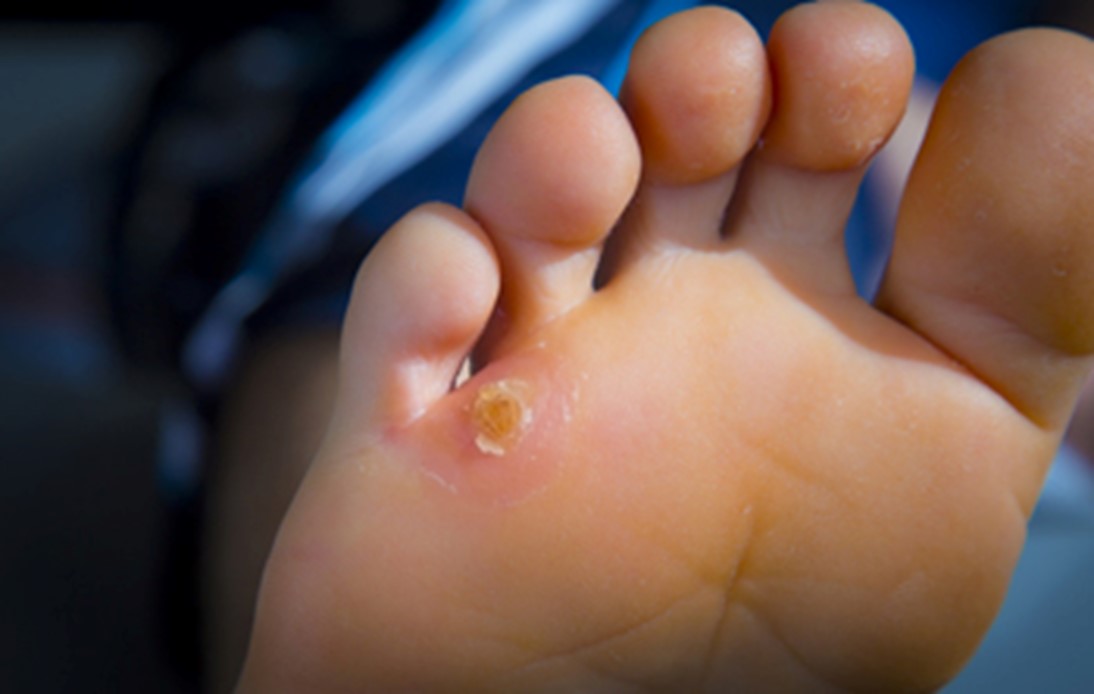 Calluses and corns on the feet are skin conditions that develop as a protective response to prolonged friction and pressure. Although they might appear similar, there are key differences between them. Calluses are broad, evenly thickened areas of skin that typically form on the soles of the feet. They can arise from activities that place repeated stress on this area, such as walking or running in poorly fitting shoes. Calluses have a hard, yellowish appearance and can cause discomfort or pain, making it difficult to walk. In contrast, corns are smaller, more concentrated areas of thickened skin, usually found on the tops and sides of toes. They develop due to the pressure and friction from wearing tight or ill-fitting shoes. Corns feature a dense, central core and can be either hard or soft. Hard corns appear on the bony parts of the toes, while soft corns develop between the toes where moisture keeps them pliable. Both corns and calluses can cause significant pain and discomfort and can lead to infection if not properly managed. Persistent or painful corns and calluses may warrant medical attention. If corns or calluses on your feet are causing you discomfort, it is suggested that you schedule an appointment with a podiatrist for targeted treatment.
Calluses and corns on the feet are skin conditions that develop as a protective response to prolonged friction and pressure. Although they might appear similar, there are key differences between them. Calluses are broad, evenly thickened areas of skin that typically form on the soles of the feet. They can arise from activities that place repeated stress on this area, such as walking or running in poorly fitting shoes. Calluses have a hard, yellowish appearance and can cause discomfort or pain, making it difficult to walk. In contrast, corns are smaller, more concentrated areas of thickened skin, usually found on the tops and sides of toes. They develop due to the pressure and friction from wearing tight or ill-fitting shoes. Corns feature a dense, central core and can be either hard or soft. Hard corns appear on the bony parts of the toes, while soft corns develop between the toes where moisture keeps them pliable. Both corns and calluses can cause significant pain and discomfort and can lead to infection if not properly managed. Persistent or painful corns and calluses may warrant medical attention. If corns or calluses on your feet are causing you discomfort, it is suggested that you schedule an appointment with a podiatrist for targeted treatment.
Corns can make walking very painful and should be treated immediately. If you have questions regarding your feet and ankles, contact Theresa Brown, DPM of Essie M.B. Smith Foot Clinic. Our doctor will treat your foot and ankle needs.
Corns: What Are They? And How Do You Get Rid of Them?
Corns are thickened areas on the skin that can become painful. They are caused by excessive pressure and friction on the skin. Corns press into the deeper layers of the skin and are usually round in shape.
Ways to Prevent Corns
There are many ways to get rid of painful corns such as:
- Wearing properly fitting shoes that have been measured by a professional
- Wearing shoes that are not sharply pointed or have high heels
- Wearing only shoes that offer support
Treating Corns
Although most corns slowly disappear when the friction or pressure stops, this isn’t always the case. Consult with your podiatrist to determine the best treatment option for your case of corns.
If you have any questions please feel free to contact our offices located in Montgomery, AL. We offer the newest diagnostic and treatment technologies for all your podiatric needs.



